
Introduction
I really enjoy portraiture. When it’s done well, it is very satisfying and tells a lot about the person in the photo. However, there is always a little element that is a constant problem for me: fly-away hair, frizzies, or whatever you call them. They’re the strands of hair that stick out from the person’s head and make your photo look a little messy. Especially with corporate or fashion photographs, they’re practically unacceptable and must go.
I’ll be showing you three techniques that will give you options when tackling those pesky follicles while keeping the final result natural-looking. As with any retouching, it’s a balancing act of taste vs need while keeping it realistic. If you go too far, then you’ll end up with “helmet hair” which often looks fake.
Retouching an image is supposed to be done well and subtle enough that the viewer doesn’t notice it. A lot of that comes from producing the shot properly in the first place, but the rest comes from good technique and application. So, having your subject well-groomed or using a hair stylist can be really helpful in reducing the amount of time and effort needed to fix hair’s errant ways. For the rest, use these three techniques.
Technique #1: Clone Stamp Tool
Clone Stamp is the Captain Obvious choice for removing heretical hair in Adobe Photoshop. Simply sample the clean area and then brush over the hair and make it go away. However, if you’ve used this tool before, you’ll notice that it has short-comings.
Its main strength is also its main weakness: it copies exactly what you sampled, pixel-by-pixel. This can be a problem with textured backgrounds or variations in color or luminosity. However, with evenly-lit and evenly-colored backgrounds, the Clone Stamp is awesome.
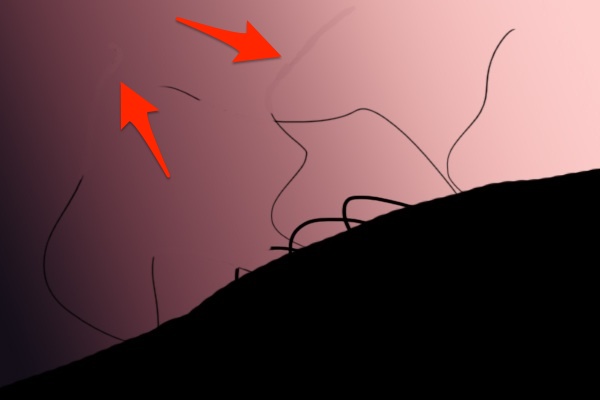
You can further refine your cloning and reduce problematic color/luminosity variations by using different Blend Modes for the brush. I use only three different modes:
- Normal
- Darken
- Lighten
The Normal mode works most of the time, but sometimes it’s too exacting and can be a problem with backgrounds that have a slight texture. Using the other two modes can make my changes literally hair-thin.

I use the Darken blend mode to retouch lighter hair that’s against a darker background. I use the Lighten blend mode to retouch darker hair against a lighter background. The effect stops once the hair reaches the same luminosity and color value as the sampled area. It will leave the areas that already match untouched, so your corrections are only a couple pixels wide even if your brush size is many times larger.
Technique #2: Healing Brush Tool
The Healing Brush is a more refined version of the Clone Stamp tool. It copies the color, luminosity, and texture from the sampled area over to the target area. It then applies some math and very seamlessly blends the two into something that looks natural.
The Healing Brush is great for removing blemishes, pimples, unwanted facial or body hair, sensor dust, etc. It works better than the cloning technique mainly because it isn’t an exact copy, but smoothly blends the target and sample areas with the target’s surroundings.
Use this tool for backgrounds that are a little more complex or textured — wherever the Clone Stamp is failing. You can also use it to clean up mistakes the Clone Stamp has made while preserving the texture. I use it for hair that crosses the face or is on clothing so that I can be rid of it without losing the complexities of the skin or fabric.
Again, you can utilize the Blend Modes to further refine your retouching.
Unfortunately, the blending prowess of the Healing Brush is also a shortcoming. It doesn’t do well when your target area is too close a hard line, such as the edge of someone’s head. You’ll get a blurred bleed and it looks messed up. In this case, the Clone Stamp tool may be better suited, adjust the brush’s hardness to match the transition.
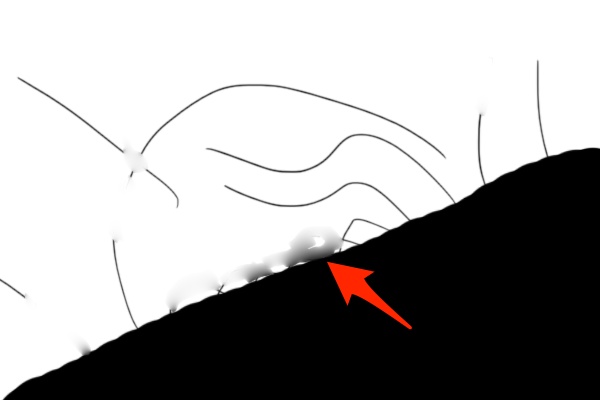
Brush Settings
So, now you know two tools that zap away errant hair and when to use them, but we’ll go over some common settings I use that get the job done. Through experiment and experience, I’ve figured that these tend to produce the best and controllable results.
I use a Wacom tablet for maximum control and flexibility, but this will work with a mouse, too. If you don’t own a Wacom and you’re doing retouching, then buy a pen tablet. They start at about $80 (USD) and last a long time. Mine is six years old.
Clone Stamp
I usually keep the default shape settings, a circle, and use it at 100% Opacity. I vary the brush’s hardness, but rarely go over 80%. In fact, I use this brush at 0%, 20%, 50%, and 80% increments as I’ve found it covers most of my needs. Of course there are times that I’ll use a different hardness setting, but that is case-by-case. And with the pen tablet, I can vary that further with pen pressure.
Like I mentioned earlier, I utilize different Blend Modes when I need to. Appropriately matching these different settings to your situation will result very good cloning and a faster workflow.
Healing Brush
A lot of people would tell you to use this brush with a soft edge. I’m going to tell you to do the opposite. Keep it at 100% Hardness all the time. Additionally, change your brush’s shape (Roundness) to a narrow ellipse between 20 and 30%. I also angle it and change the direction, depending on my needs.
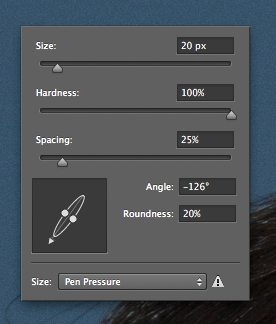
What these settings do is help the Healing Brush work better by forcing it to re-sample more often and more randomly than a soft-edged circle. Since the Healing Brush automatically applies blending, you really don’t need a soft brush. The results have been very natural as well as a greatly reduced risk of that edge blurring I mentioned earlier.
Finally, keep your brush size only slightly larger than the area you wish to correct, especially with fly-away hair close to the edge of someone’s head or if the background changes color or luminosity too greatly.
Technique #3: Surface Blur
While this technique is mainly independent of the other two, it does incorporate the others for maximum efficacy. It is a really quick way to remove nearly all that fly-away hair with a single filter effect with some basic masking. Aside from the processing bottleneck, it is faster than going over each hair with either the Clone Stamp or Healing Brush.
Unlike Gaussian Blur or the other blurs, Surface Blur doesn’t blend the edges beyond it’s threshold setting. Surface Blur considers something an “edge” when there is a significant change in color and/or contrast. So, things like skin, clothing, and other fine details will be smoothed, but not the edge of someone’s face — or the main mass of hair.
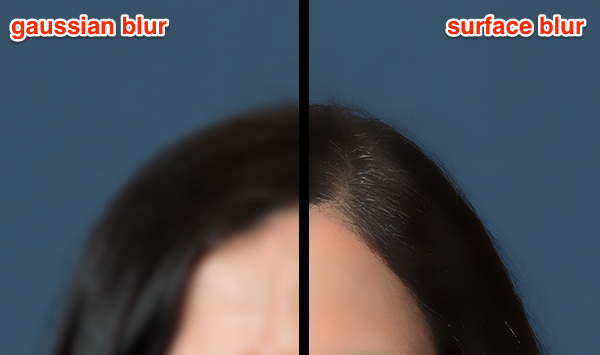
Surface Blur is a great way to clean up a hair edge when you have a gradient background — where the Clone Stamp would struggle. It will do a nice job maintaining gradual tonal changes while keeping hard edges well-defined. Give it a go when you have an image with a graduated background.
Let’s get into the steps for using Surface Blur to clean up hair in your images.
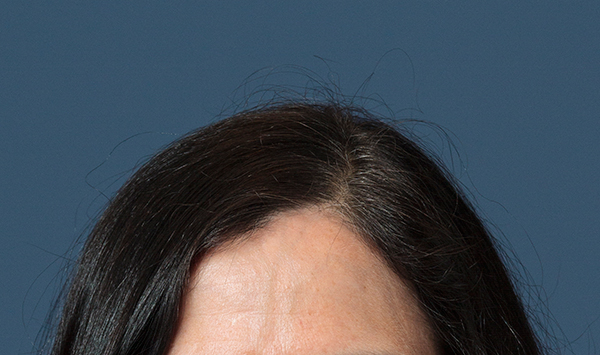
Step 1: Create a New Layer
Drag the layer onto the “Create New Layer” icon (Cmd+J or Ctrl+J) so that you don’t affect any previous retouching you’ve done. You can convert this new layer into a Smart Object (Layer > Smart Objects > Convert to Smart Object) to be able to change your settings without having to reapply the filter from scratch. Converting to a Smart Object is optional.
Step 2: Apply the Surface Blur
Go to Filter > Blur > Surface Blur in order apply it. You’ll see a preview of the effect at its current settings.
The Surface Blur filter has two sliders, Radius and Threshold. The
Radius determines the amount/strength of blurring. The Threshold determines the tolerances of what the filter considers to be an “edge.” Going too low with the Radius will give you a halo and going too high with the Threshold will make you lose your edges.You’ll need to adjust the sliders so that the fly-away hair disappears due to the blurring, but the main body of hair and hard edges remain quite sharp. This will take some experimenting and will vary from image to image. However, I’ve found that a Radius of 40 pixels and Threshold of 20 pixels gives me great results.
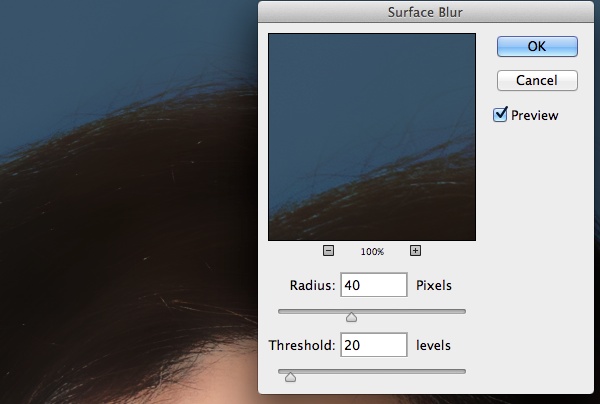
Once you’ve gotten the settings pretty close, apply it and evaluate the results. A lot of the isolated hair should be gone or mostly gone.
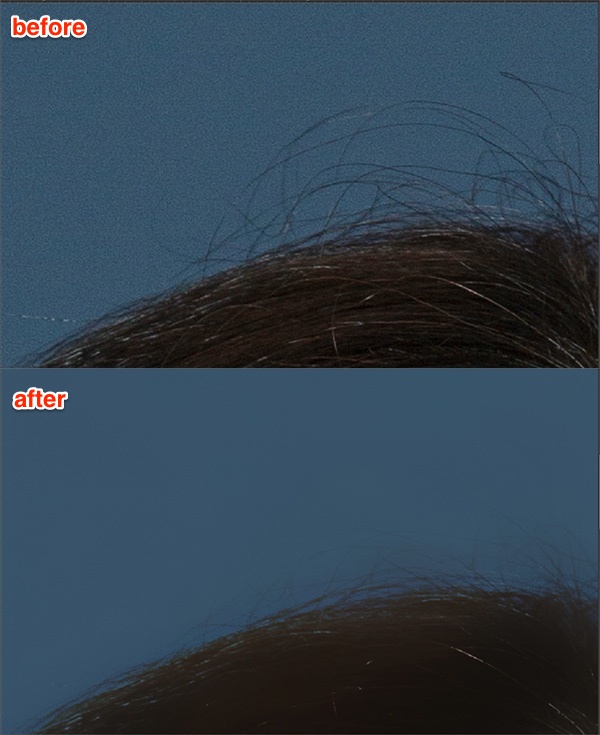
Step 3: Clone Stamp Clean-up
There are times when the Surface Blur gets the job done, but often you’ll need to tackle the few that got away. With a soft-edge brush, Clone Stamp those escapees by sampling very close to the target area to avoid noticeable color variations. I keep my brush no higher than 50% hardness.

Try not to make the hairline too clean because then it will look unnatural. You can do a second round of Surface Blur at lower settings if it could use a little more general refinement.
Step 4: Create a Layer Mask
Now it’s time apply the effect only to the outer hairline. Create a Layer Mask on your layer with the Surface Blur by clicking the “Create Layer Mask” icon. Invert the color of the mask from white (visible) to black (invisible) with Cmd+I (Mac) or Ctrl+I (PC). This will hide the effect.
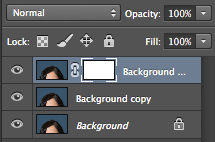
Now, with a hard-edged brush (about 80%) reveal the effect by painting on the mask with white. Limit the revealing by only brushing over the hair that need to go away. You don’t need to be very precise because the Surface Blur should maintain the edging of the main body of hair.
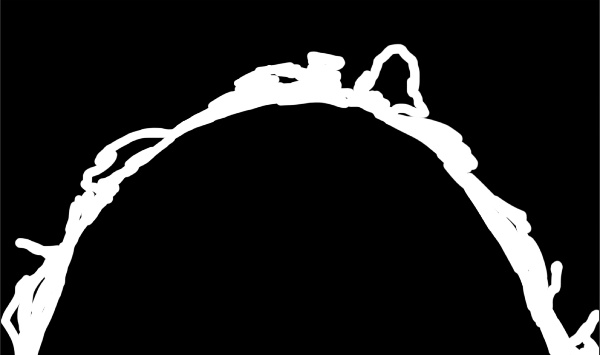
Step 5: Add Noise
Surface Blur usually removes all the noise (grain) in an image. This lack of texture can ruin the effect by being too smooth. We’ll need to add noise in a dosage that matches the rest of the image.
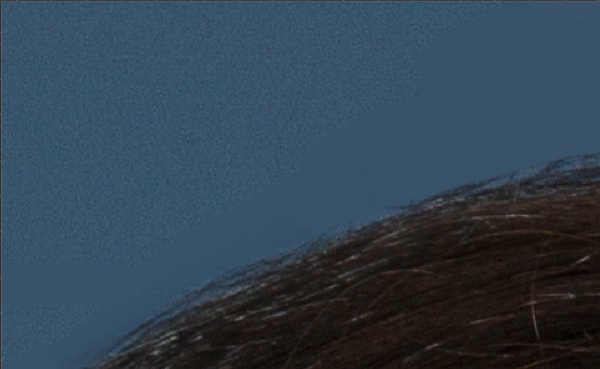
Make sure you’re working the image of the Surface Blur layer and not the mask by clicking on the thumbnail of the layer. Go to Filter > Noise > Add Noise.

In the Add Noise dialogue box, turn on the Gaussian and Monochrome settings. Adjust the slider until the noise pattern and density closely matches the rest of the image. While not entirely necessary, this small detail does an excellent job hiding the retouching you’ve done.
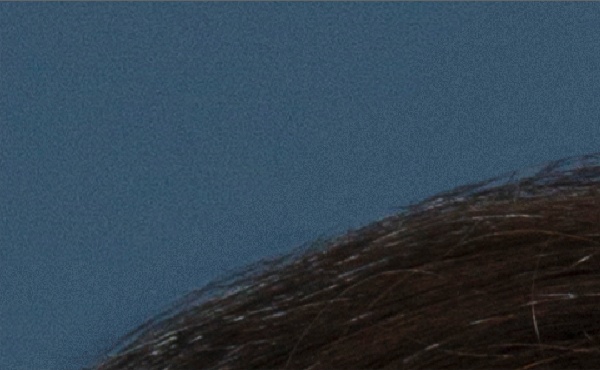
Conclusion

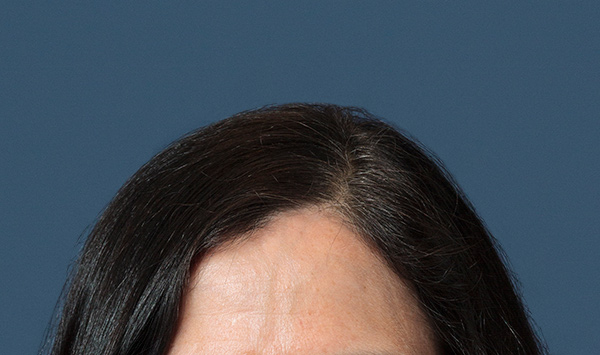
When you have a great portrait, sometimes fly-away hair can really be a pain. While cloning and healing are great, they do have limitations. Using them in conjunction with the Surface Blur technique can not only improve your retouching results, but also cut-down on the time and tediousness of either technique alone.
With practice, you’ll be able to evaluate an image and quickly decide which of these techniques will be most effective in removing fly-away hair.
3 Ways to Retouch Fly-Away Hair
Geen opmerkingen:
Een reactie posten